Nowadays, flying drones are such a common sight, from the harmless ones we use to shoot videos of our vacations to the deadly ones used by the military. Drones are pretty much part of our daily lives.
The drone technology was born in the military and later on was granted to us, the civilians. The US Air Force has been developing it for quite a while; the first successful drones date back to WWII when adapted B17 Flying Fortress flew unmanned, “one-way ticket” missions, bombing heavily defended nazi targets.
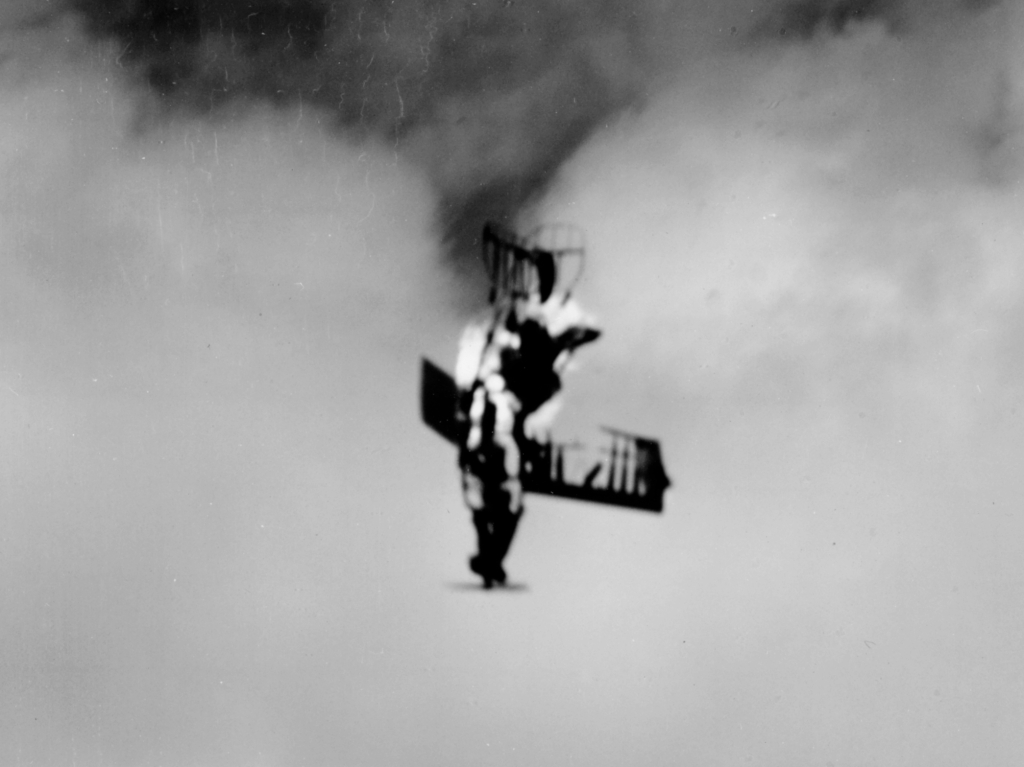
After the end of the war, both the Navy and the Air Force converted hundreds of surplus airplanes to fly as drones, to be used as targets for weapons development programs, and that is precisely how this bizarre story begins.
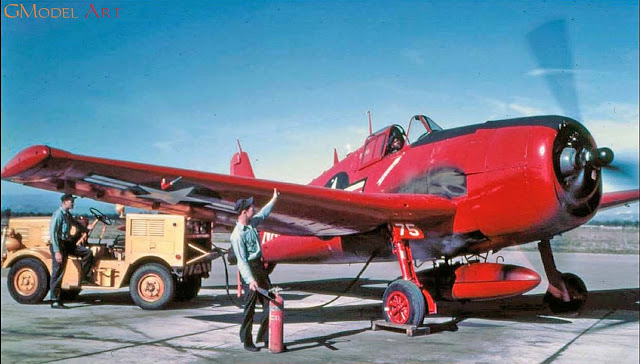
The year was 1956 and the Cold War was already in full swing. At 11.34 am on August 16th, a bright red Grumman F6F Hellcat drone took off from Point Mugu Naval Air Station, in California, and according to the plan, the old fighter should fly peacefully over the Pacific Ocean before being destroyed by a missile.

Before we go ahead, let’s take a closer look at this plane: the Grumman F6F Hellcat was the most successful US Navy fighter of WWII. It shares this reputation with the F4U Corsair, but the Hellcat was better suited to operate on carriers.
It was powered by the Pratt-Whitney R-2800 Double Wasp, air-cooled radial engine, capable to crank up 2,000 HP, more than enough to pull the plane to a top speed of 630 Km/h. The Hellcat’s armament consisted of 6 Browning 0.50 cal machine guns. The F6F finished the war with an impressive victory ratio of 19:1. Grumman produced 12,275 Hellcats and since not a lot of them were lost during the war, the US Navy had a whole bunch of them to convert to drones.
Now, back to the story: Soon after the drone took off towards an offshore missile test area, it stopped responding to the command of the ground crew. The situation wasn’t, at first, much of a big deal, the plane should fly steadily over the Pacific Ocean until it runs out of gas and ditch itself into the water but instead, it gracefully turned southeast, towards the city of Los Angeles.
Now, the Navy had a much bigger problem in their hands: Point Mugu air station didn’t have a single fighter that could be quickly dispatched to intercept the rogue drone. They immediately called Oxnard Air Force Base, home of the 437th Fighter-Interceptor Wing. This base was 8 km north of Point Mugu.
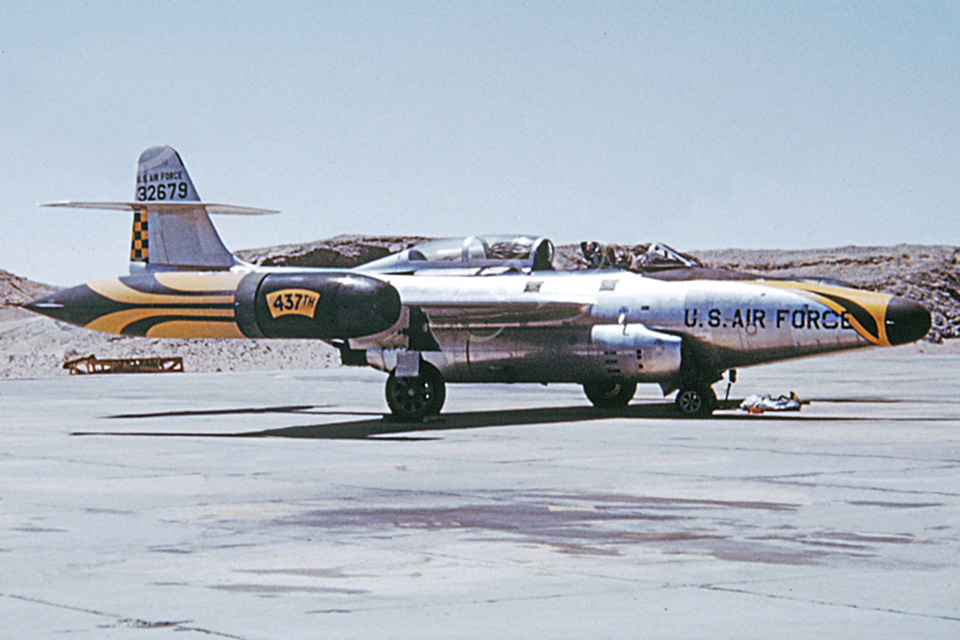
They quickly scrambled two F-89D Scorpions and flying at full afterburner the fighters soon caught up with the drone at 30,000 feet (9,100 m), northeast of Los Angeles, and that is the point when the story goes sour, but before we move forward, let’s take a quick look at the Scorpion fighter.
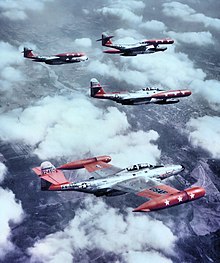
The Northrop F89 Scorpion was a high altitude, all-weather interceptor, designed to protect the USA from the threat of the Soviet nuclear bombers. It was powered by two Allison J36 turbojet engines producing 7,200 lbs of thrust each in afterburner mode, able to push the fighter to a top speed of 1,035 km/h.
The Scorpion was one of the first fighters built with no machine guns or cannons, following a new Pentagon policy that attested this kind of armament was becoming obsolete in modern air combat; instead, the fighter was equipped with the “Might Mouse” unguided rockets, kept in pods, located on the tip of the wings.
The Battle
The Hellcat drone was circling Los Angeles, flying in a wide radius curve pattern, when the Scorpion pilots got the drone on visual, it was flying over Santa Paula, so they waited until it entered some unpopulated area to start the attack. As soon as the Hellcat reached the mostly inhabited Antelope Park, the first fighter got in position to shoot it down. The “D” version of the Scorpion was equipped with the state of the art Hughes E-6 fire control system, that integrates the plane’s radar and an attack-plotting computer; in other words, killing that drone should be a piece of cake… Or so they thought.
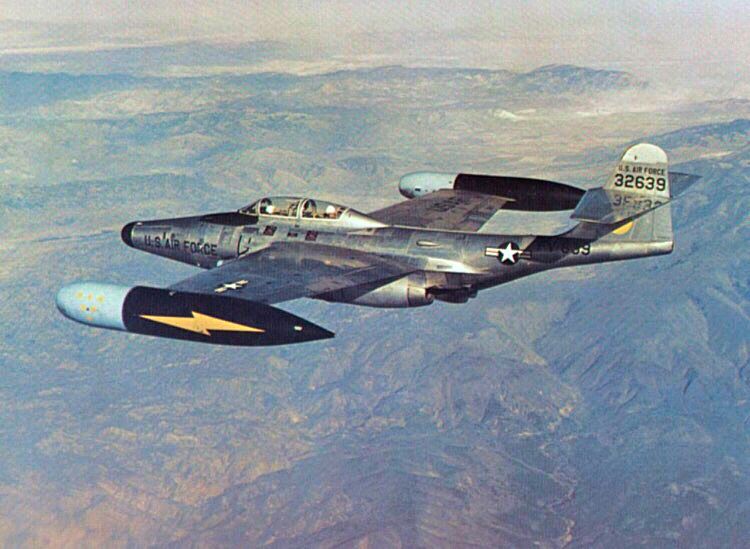
First Lt. Hans Einstein was the first one to give it a try, he put his Scorpion in position, pressed the fire button and, nothing happened, he tried a couple more times until he gave up and called his wingman, First Lt. Walter Hale. Hale repeated the procedures of his colleague and again, not a single rocket was fired. The automatic fire system had jammed in both fighters.
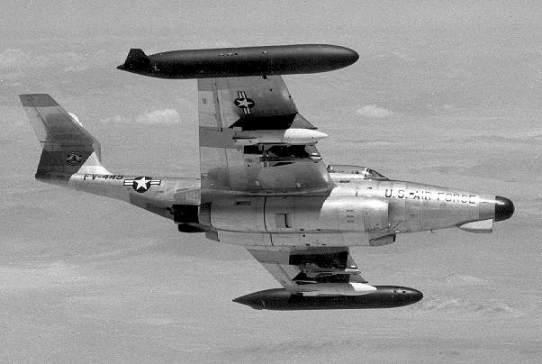
They switched from automatic to manual and now it was time to get the job done in the old fashion way, WWII style, but there was another problem: the US Air Force had put so much faith in the electronic fire system that all the Scorpions “D” had their gun-sight removed from the cockpit. The pilot’s job now was pretty much like firing a gun just pointing it to the target, but not aiming.
At this point, the drone had changed its course and it was once again flying towards LA. Lt. Einstein positioned his plane as best as he could behind the drone and fired a burst of 42 rockets, completely missing the target. The second interceptor moved into position and unleashed another salvo of 42, a couple of rockets even bounced against the drone’s fuselage but none detonating.
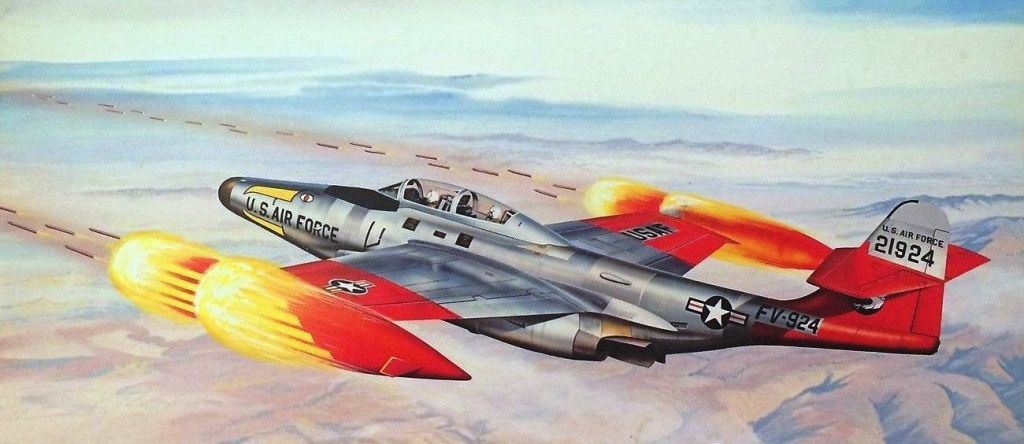
A single rocket would be enough to bring the old Hellcat into pieces but the pilots couldn’t fly too close to the target because the debris from the explosion could damage their fighters. Close to the town of Newhall the pair of jets made a second pass, launching 32 rockets each; again none found the mark. As the drone headed northeast toward Palmdale, each pilot fired a last salvo of 30 rockets at the target with no hits. Running low on fuel and out of ammunition, the Scorpion pilots had no other choice but to abandon the mission and go back to the base.
The Hellcat at this point was also running out of fuel and it crashed at a desolate section of the desert, 14 kilometers east from the Palmdale Regional Airport. Before hitting the ground, the drone severed some power lines along a rarely used road.
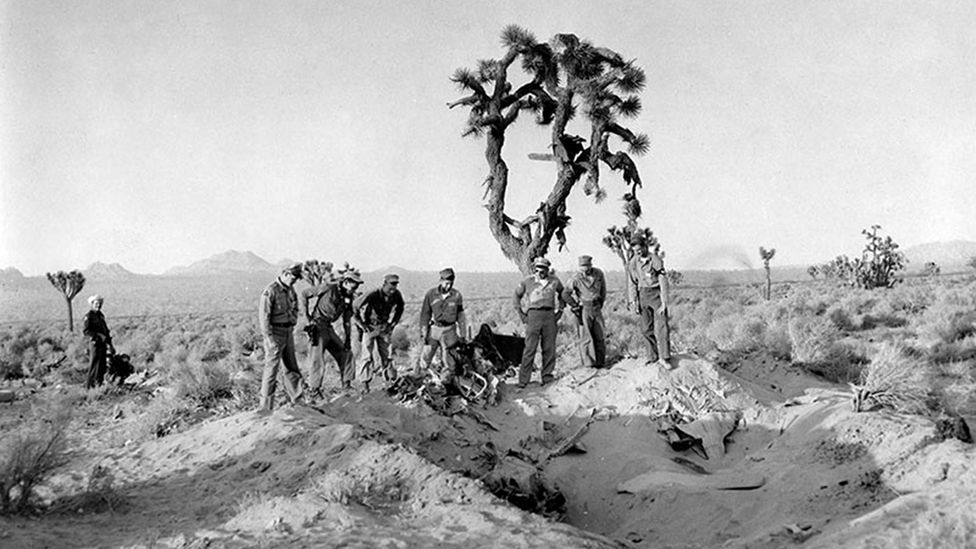
The aftermath
The “Mighty Mouse” used by the Air Force on that day was already a veteran of the American military, it is an unguided rocket, fuelled by solid propellant and its warhead is packet with High Explosive. Its dimensions are 6 ft long x 2 3/4 inch in diameter. It was named after a cartoon super-hero, very popular in the 50s, a flying mouse with superpowers, small but powerful. The two Scorpions fired a total of 208 of those rockets against the drone and if they failed to destroy it, they surely caused havoc on the ground.
The first set of rockets started brush fires 11 km northeast from the city of Castaic (northern LA) which burned 150 acres of bushes.
Some of the rockets fired on the second salvo hit oil sumps owned by the Indian Oil Co. The fires reached within 300 feet (91 m) of the Bermite Powder explosives plant. Other rockets started fires in the proximity of Soledad Canyon, near Mount Gleason, burning more than 350 acres of rough brush.
The final set of rockets were fired while the Scorpions faced Palmdale; many landed within the town. As the drone passed over Palmdale’s downtown, Mighty Mouse rockets fell like hail. A considerable amount of shrapnel damaged a few houses and cars within the city limits.
Two workers in Placerita Canyon had been eating in their utility truck; right after they left it to sit under the shade of a tree, the truck received a direct hit from a rocket and it was destroyed.
It took 500 firefighters two days to bring the brushfires under control. More than 1,000 acres were burned. Other than the pride of the US Air Force, no one got seriously hurt.
Conclusions
The incident, which became known as “The battle of Palmdale” brought even more controversies to the rivalry between the Navy and the Air Force: How come, not one but two, well trained Air Force pilots, flying modern jet fighters failed to bring down a WWII era, piston-powered Navy fighter… With NO ONE on board? Jokes aside, I believe the incident has a few points to analyze.
The US Navy can be excused for “losing” that drone, after all, this kind of technology was still in its infancy in the 1950, but then, we have to excuse the Air Force as well for the fail of the automatic fire system in both fighters, after all, the electronic guidance for missiles/rockets was also in its infancy. What is appalling is the decision of the pilots to fire the rockets while flying above a well-populated town. There is no register if the pilots or the Air Force ever received any kind of prosecution.
Another important fact is the stubbornness of the military in ordering some fighters with no guns. It is clear if the Scorpions were equipped with a pair of the faithful Browning 0.50 machine-gun (and gun sight, of course) they would have shot down the Hellcat pretty quickly and with minimum damage to the ground.
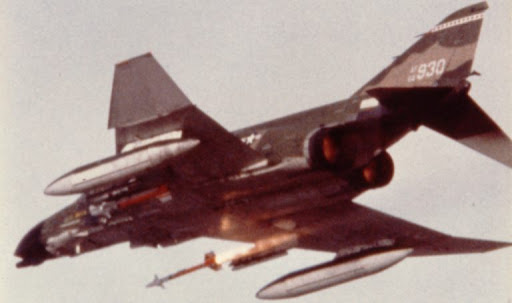
This concept was pushed well into the 1960s, for example, the “superstar” fighter during the Vietnam War, the F4 Phantom, was put in combat with no guns and equipped with a very unreliable missile system.
Perhaps the real issue here is how big the American military was becoming during the Cold War and how often it would clash with the civilian population. Miraculously there were no fatalities during the ‘Battle of Palmdale”, but this incident is just one example of a series of events when mistakes made by the military brought real danger to the Americans.
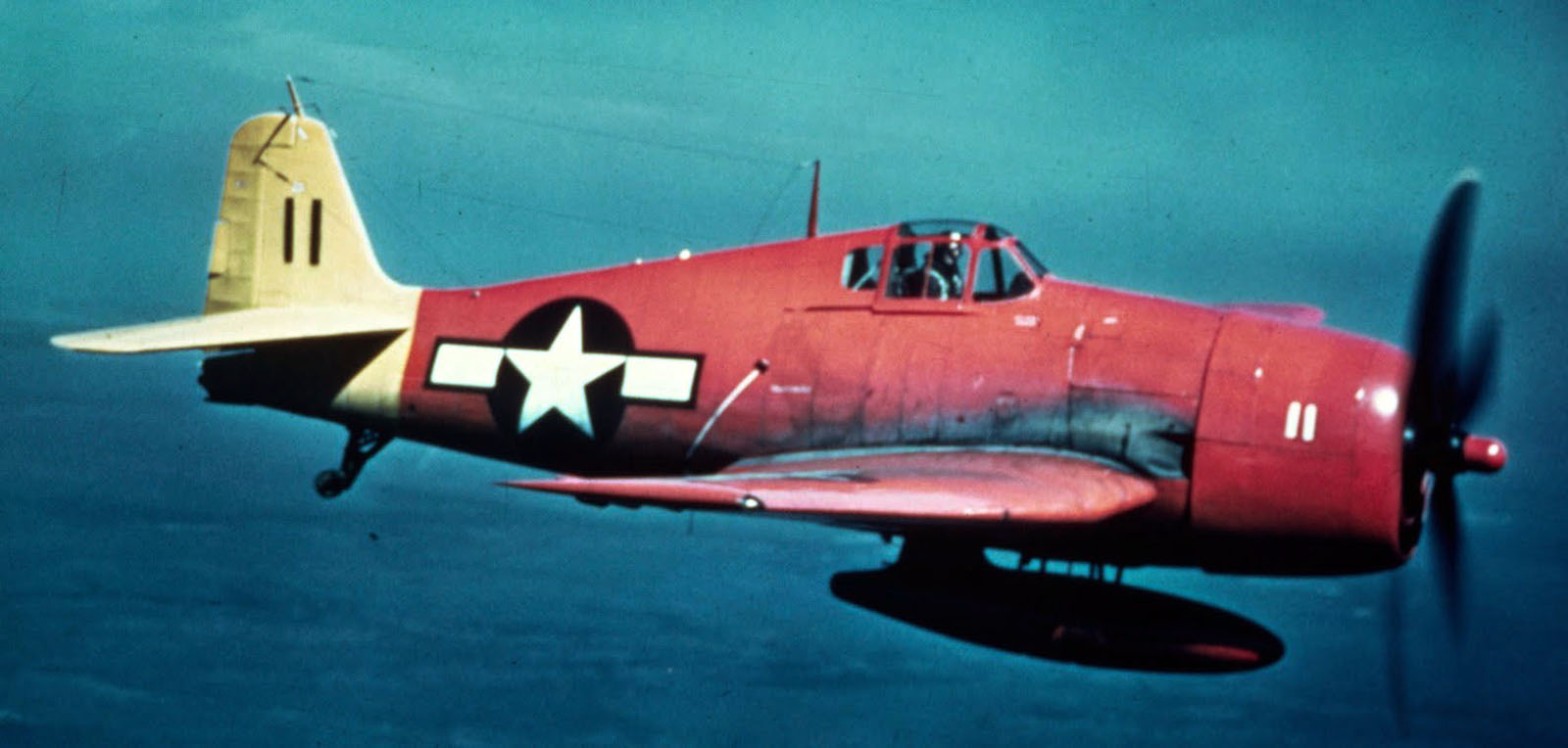
Fascinating story! I did not know any of that.
LikeLiked by 1 person
Interesting account well told 🙂
LikeLiked by 1 person
Where do you find all this stuff? Like you, I’m an airplane geek but have never read about this. Thanks for sharing.
LikeLiked by 1 person
I think I heard this story on NPR, more than 20 years ago and I never forgot about it.
LikeLike